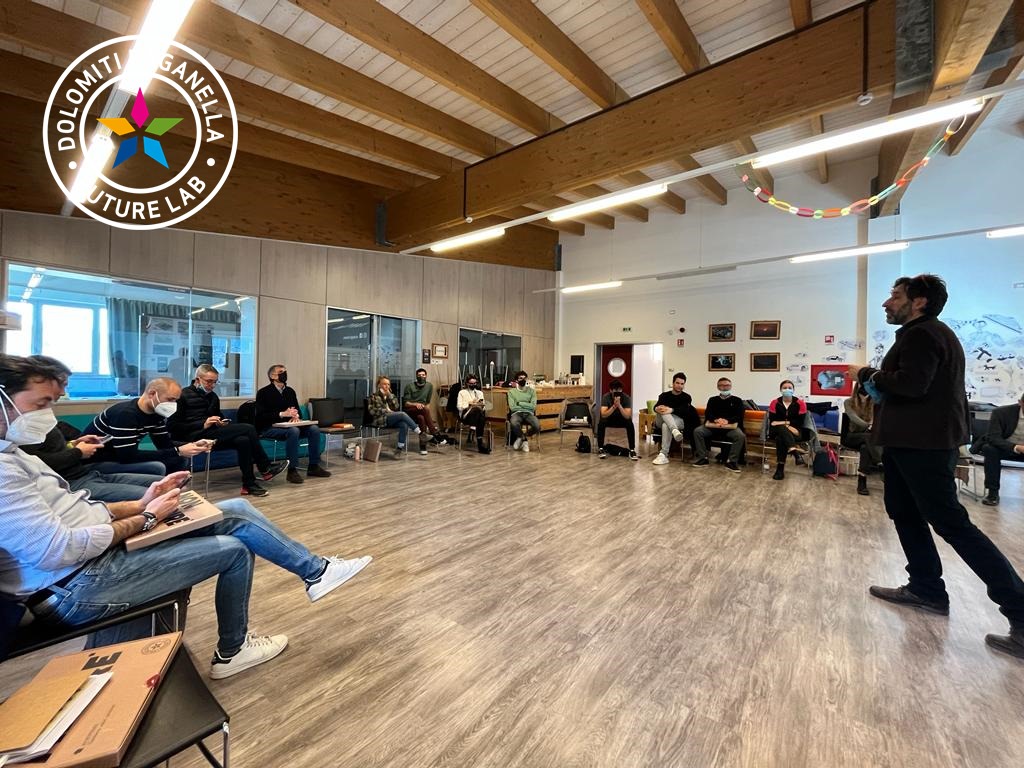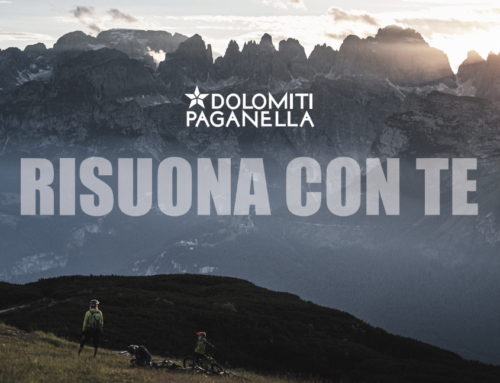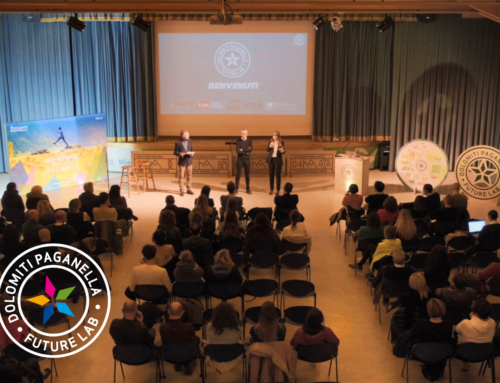Borrowing a maritime term, it is fair to say that Future Lab 2.0 is sailing with the wind at its back. The first three workshops organized by the consulting company Terra Institute have been held according to plan and with great success. These included the participation of the New Generation
Tourism Commission (a special commission of young people under 35 from our tourist destination) and the board of Apt Dolomiti Paganella.
During these meetings the NGTC and the Apt board, together forming the so-called “Green Team”, worked together with the Terra Institute to define an important systemic framework. This will form a guide for identifying and steering the work of forthcoming Future Lab 2.0 design workshops, which will collaborate with economic operators in a series of actions in areas relevant to the sustainable development of our holiday destination. This systemic framework visually resembles a doughnut shape (as can be seen in the image below) and is a realistic representation of the so-called “planetary boundary theory”. This postulates that planet Earth has objective physical limits (“planetary boundaries”) which human behaviour cannot exceed without suffering disastrous consequences for our existence, as we are now indeed seeing day after day.
These boundaries constitute a “safe and fair operating space for humanity”, effectively a sort of comfort zone beyond which we should, and indeed cannot exceed. The various layers making up the “doughnut” interact with each other, are closely interconnected, and form a real circular system within which every action generates an effect, in turn producing an environmental impact (the so-called action-effect-impact chain). In a holistic view the Dolomiti Paganella resort can be considered a circular system, an ecosystem within the overall ecosystem of the planet Earth, which is fundamental for achieving sustainable development in our territory. Development within a circular system requires integration of the resorts strategies and processes for sustainability with those of the various economic operators (hotels, uplift facilities, restaurants, public bodies, and so on). In other words we are all in the same boat, and all our actions have a knock-on effect on those of others, generating effects and impacts both inside and outside our tourist system. The Dolomiti Paganella system makes it possible, in a sense, to travel back in time.
Starting from impacts on the planetary confines (the outermost layers of the doughnut) it is possible to trace back to the respective effects and actions that generated them. As already mentioned, this enables targeted interventions based on a hierarchy of priority, with design initiatives that address themes of resort sustainability and its future development in equilibrium with the environment. The Green Team have been called upon for input in this process, and the local
economic operators and other resort stakeholders will also be involved soon.
Borrowing a maritime term, it is fair to say that Future Lab 2.0 is sailing with the wind at its back. The first three workshops organized by the consulting company Terra Institute have been held according to plan and with great success. These included the participation of the New Generation
Tourism Commission (a special commission of young people under 35 from our tourist destination) and the board of Apt Dolomiti Paganella.
During these meetings the NGTC and the Apt board, together forming the so-called “Green Team”, worked together with the Terra Institute to define an important systemic framework. This will form a guide for identifying and steering the work of forthcoming Future Lab 2.0 design workshops, which will collaborate with economic operators in a series of actions in areas relevant to the sustainable development of our holiday resort. This systemic framework visually resembles a doughnut shape (as can be seen in the image below) and is a realistic representation of the so-called “planetary boundary theory”. This postulates that planet Earth has objective physical limits (“planetary boundaries”) which human behaviour cannot exceed without suffering disastrous consequences for our existence, as we are now indeed seeing day after day.
These boundaries constitute a “safe and fair operating space for humanity”, effectively a sort of comfort zone beyond which we should, and indeed cannot exceed. The various layers making up the “doughnut” interact with each other, are closely interconnected, and form a real circular system within which every action generates an effect, in turn producing an environmental impact (the so-called action-effect-impact chain). In a holistic view the Dolomiti Paganella destination can be considered a circular system, an ecosystem within the overall ecosystem of the planet Earth, which is fundamental for achieving sustainable development in our territory. Development within a circular system requires integration of the resorts strategies and processes for sustainability with those of the various economic operators (hotels, uplift facilities, restaurants, public bodies, and so on). In other words we are all in the same boat, and all our actions have a knock-on effect on those of others, generating effectsand impacts both inside and outside our tourist system. The Dolomiti Paganella system makes it possible, in a sense, to travel back in time.
Starting from impacts on the planetary confines (the outermost layers of the doughnut) it is possible to trace back to the respective effects and actions that generated them. As already mentioned, this enables targeted interventions based on a hierarchy of priority, with design initiatives that address themes of resort sustainability and its future development in equilibrium with the environment. The Green Team have been called upon for input in this process, and the local
economic operators and other resort stakeholders will also be involved soon.







